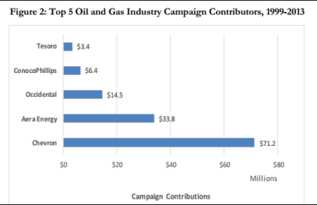[Editor: Breaking news … DAVIS, CA – On Tuesday evening, 9/2/14, the Davis City Council approved the letter as written (but with minor editorial changes) and directed staff to submit it to the City of Benicia for the record. The DRAFT letter can be seen here. – RS]
City Council finds Valero crude-by-rail impact report lacking
By Elizabeth Case, September 3, 2014The Davis City Council has released a draft of the letter it plans to send to the city of Benicia in response to the Valero crude-by-rail project’s draft environmental impact report.
The project would build out the Valero refinery’s capacity to unload oil from rail cars, increasing shipments to about 70,000 barrels of oil a day in two, 50-car-long shipments, likely from Roseville to Benicia along the Capitol Corridor rail line. That line passes right through downtown Davis.
Draft environmental impact reports are required for projects that could have significant impacts on their surroundings. Notably, this report found the risk of an accident — a derailment and spill — to be an insignificant risk, while the additional trains would have a significant air quality impact.
The City Council will meet at 6:30 p.m. Tuesday in the Community Chambers at City Hall to vote on the language contained in the letter. The letter, as it stands, argues that the assessment is both misleading and incomplete, and focuses on a few main concerns:
* The report’s failure to address a May emergency order and an August notice from the U.S. Department of Transportation. The former requires railroads transporting more than 35 cars, or 1 million gallons, of North Dakota’s Bakken crude oil in a single shipment to notify state emergency response commissions. The latter includes a report about improving vehicle-to-vehicle communication.
* A request that Benicia mandate the use of the newer 1232 tank cars. These have thicker shells and other improvements over “legacy” — DOT 111 — cars, which have been involved in most of past decade’s oil-by-rail accidents.
However, 1232 cars were involved in at least one derailment in Lynchburg, Va., in April. Benicia cannot legally require Valero or Union Pacific to use a specific type of car, since railroads fall under federal jurisdiction.
Valero spokesperson Chris Howe has previously confirmed that the company would use only the 1232 cars to transport oil.
* A lack of information on where and how Valero might store the crude oil, if it isn’t used right away. Specifically, Davis is concerned that the siding between Interstate 80 and Second Street in Davis could, and might already, be used for the storage of crude oil.
In addition to the above concerns, the Davis City Council requests an investigation into the current conditions of the railroad line from Roseville to Benicia.
The letter also alleges that the EIR fails to account for fire or explosions in its assessment of damage caused by release of hazardous materials, that it fails to take a magnitude of such a spill into account, and that it does not assess all the possible routes for the crude oil to be shipped to the Valero refinery.
The letter also requests that advance notice of shipments be made to city of Davis and Yolo County authorities — information oil companies have been tight-lipped about, citing terrorism concerns.
If Valero is importing Bakken crude at amounts specified in the transportation department’s order, it will have to inform the state commission. Assembly Bill 380, which was approved Friday, would require flow data and other information to be submitted about a company’s top 25 hazardous materials, including oil from the Bakkens, though it would continue to keep the information out of the public realm.
Davis’ comments draw strongly from those already filed by the Sacramento Area Council of Governments and Yolo County.
Davis City Council member Lucas Frerichs, who also sits on SACOG’s Rail Ad Hoc Committee, said the council understands the need for oil imports, but doesn’t believe the environmental assessment adequately assesses potential dangers.
“It’s going to come in by rail, we just need to make sure it’s done safely,” Frerichs said. “(But the report) absolutely needs to be adjusted in order to protect the safety of citizens up and down the rail corridor.”
The council passed a unanimous resolution in April opposing oil by rail until safety issues, like better warning signs about speed changes, have been addressed.
“Our read of it — even if the risk is only once in every 111 years, if there was a catastrophic explosion, especially in our downtown, it would obviously have a great impact on our community, on lives on our property,” said Mike Webb, the city’s community development and sustainability director and author of the letter.
“Even if that was only once in 111 years, that’s once too much.’
If the Benicia Planning Commission acknowledges the concerns voiced by Davis, it would require a reissue and recirculation of the EIR, delaying the project. Representatives for the commission could not be reached before deadline.
“It would slow the process down, but I don’t think that would necessarily be a bad thing,” Webb said,” because we’re asking for more information and disclosure about what the project is.”
Interested parties have until Sept. 15 to submit a comment on the EIR before the Benicia Planning Commission begins its review.



 may surprise you.
may surprise you.

You must be logged in to post a comment.